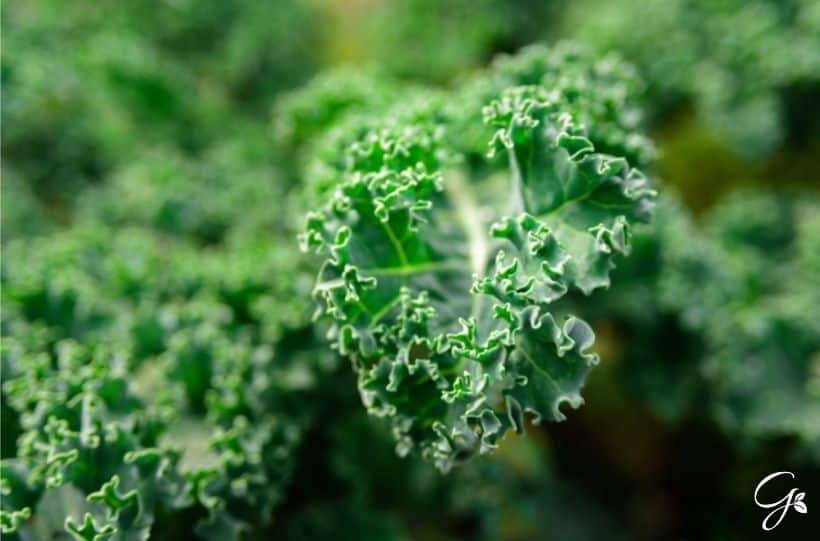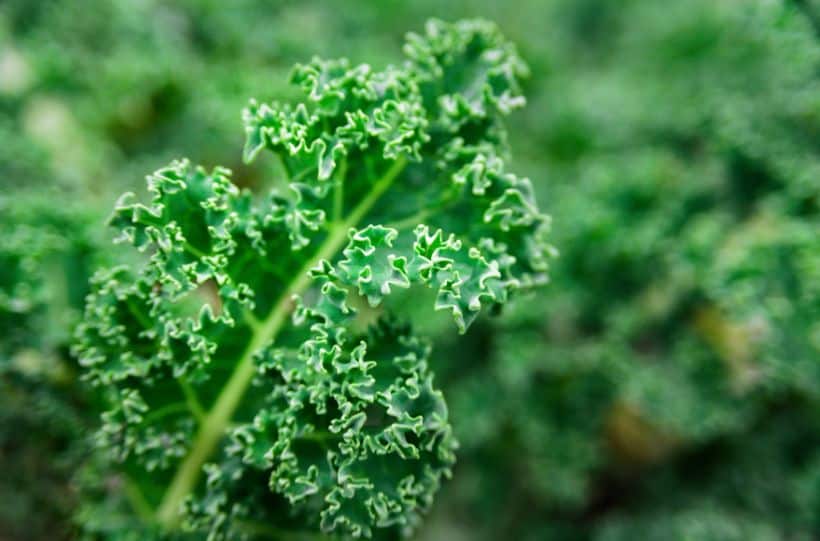How to Grow Kale in Your Garden
Do you like kale? A lot of gardeners seem to love growing this curly green leafy vegetable, and with good reason!
Kale is nutritious and relatively easy to grow. If you’re thinking about adding kale to your garden plan, read on for tips on how to grow it successfully.
For anyone looking to bump up the nutrition they are eating, you can’t get much better than adding kale. Kale truly is a superfood when it is consumed raw.
Just one cup of raw kale contains more than the daily recommended value of vitamins A, K, and C. It is also a great source of manganese, copper, potassium, and more.
It is low in calories and low in carbs but also low in fat. Even better is that the fat it does have is primarily made up of an Omega-3 fatty acid called alpha-linolenic acid.

This post contains affiliate links that earn me a commission at no additional cost to you.
Where does kale grow best?
Kale, like spinach, grows best in alkaline soil. Where spinach requires a PH of 7.0 or more, kale will thrive anywhere between 6.5 to 8.0.
Before you plant, be sure to use a soil PH test kit to test your soil. If it reads as less than 6.5, consult your local AG extension on how to raise the alkalinity in your soil.
Kale grows best in garden zones 7, 8, 9, and 10. However, it can be grown successfully in other zones with a bit of care.
It can be planted as both a fall and spring crop, with each season requiring different needs for your kale plants.
If you are not sure which gardening zone you reside in, the USDA publishes a plant hardiness zone map that can help you figure it out.
How to Plant Kale
Spring kale should be planted 3-5 weeks before the last average frost date for your area. For fall kale, planting 6-8 weeks before the first frost will allow you to have fall and winter harvests.
If your plants seem small, it is best to wait. Your kale will take off and thrive once soil temperatures meet optimal conditions based on outdoor temperatures. Soil temperatures that are too cold or too warm can both cause small plants.
Kale should be planted in well-draining, loose soil that has been improved using organic compost and organic fertilizer as much as possible.
Since it is such an easy plant to grow, it can be grown in-ground, in raised beds, or even in containers. As long as they are planted at the proper depth with correct spacing, they will thrive.
It can also be grown successfully from seed or seedlings. If you are planting kale seeds, you will need to plant them at a depth of ¼” to ½”. Approximately two weeks after the seeds germinate, begin thinning them so that only the most robust seedlings are left. To plant kale as transplants, plant them only as deep as they are already growing.
Kale plants do need a bit of space between each other. They should be planted 18-24” apart. This spacing ensures the roots do not steal nutrients from one another and that your plants receive the nutrients they need. This is the only way to ensure your kale plants grow as fast and as vigorously as they should.
Kale requires quite a bit of water. Plan on watering them with between 1 and 1 ½” of water each week. If you live in a rainy environment, you may not need to water them at all. However, they are not drought tolerant.
If your climate is dry, you will want to take extra care to ensure they are watered the way they need. The amount of water kale needs is the main reason for needing well-drained soil. Too much water pooling at the bottom of the root systems can cause root rot or other diseases.
To help protect the roots and stems, mulch with organic mulch, dried shredded leaves, or a layer of compost. This will not only help to retain moisture but also help keep the roots cool to stimulate growth. Finally, it also cuts down on the number of weeds that may grow around your kale plants.
How to Harvest Kale
Kale is ready to harvest when the outer leaves are big enough to eat. However, kale tastes best after it has been through a light frost.
To harvest kale, pick leaves from the bottom of the stem upwards. Take as many leaves as you would like, but leave at least four leaves on the plant. Doing so will ensure it continues to produce and extend your harvest all winter (if you are in zones 7-10).
Discard any leaves that are yellowed, brown, or otherwise not in pristine condition.
If you are in colder gardening zones, kale will often survive the winter with a bit of preparation. You can use thick layers of mulch, plastic tunnels, or row covers to overwinter the plants.
However, if you do overwinter your plants, be sure to harvest them completely before spring. Warmer weather will cause them to bolt and bloom, which causes a bitter-tasting leaf.
Using kale in the kitchen
My favorite ways to use kale are in salads and blended into smoothies, but you can also add a handful into your favorite soup or make an awesome pesto.
If you are not going to use all your kale at once, you can freeze it. Simply, place your kale on a cookie sheet and place it in the freezer. Once frozen, transfer to a freezer bag.

And for more guides on growing vegetables in your garden, check out these:
